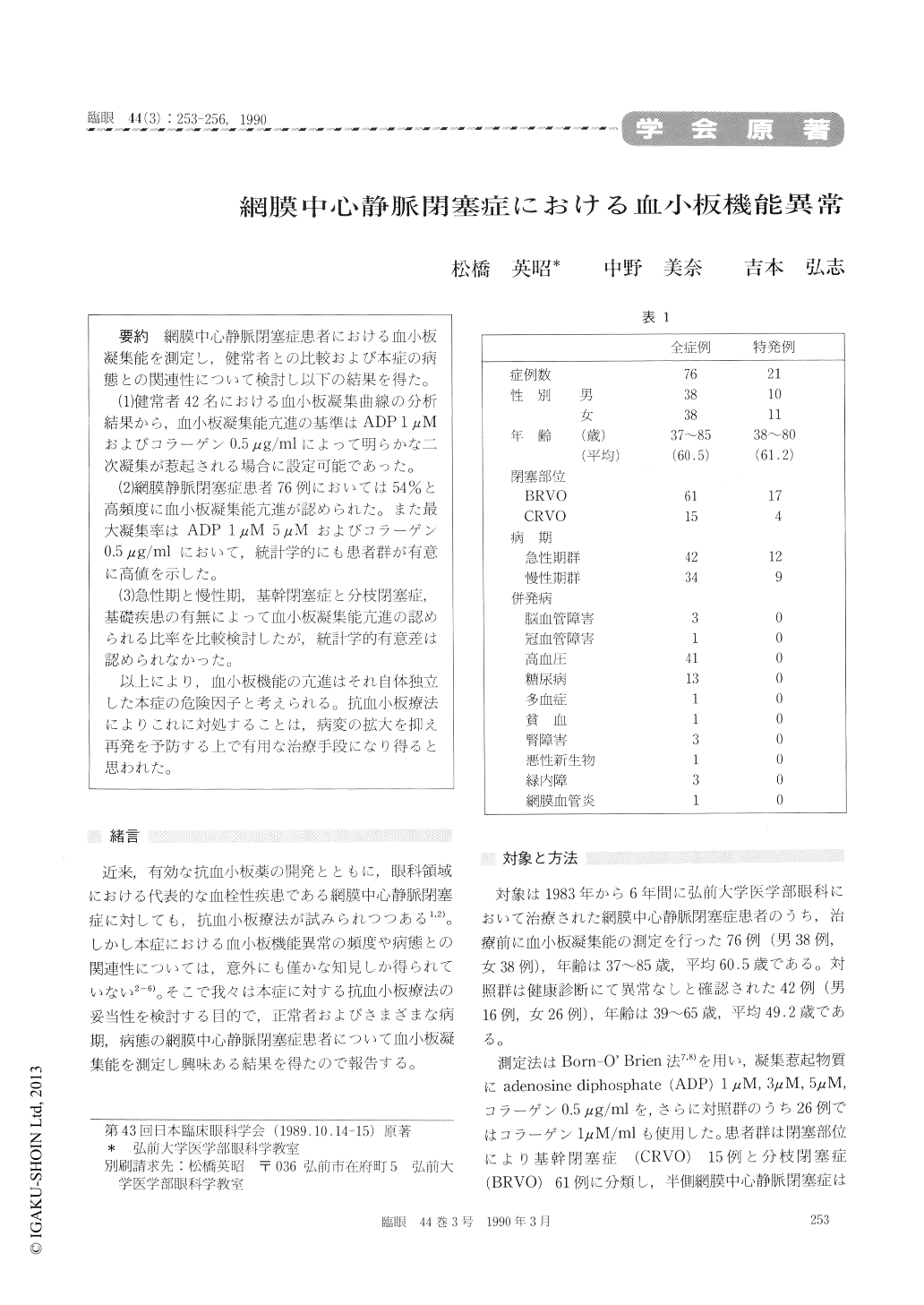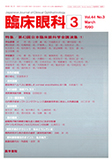Japanese
English
- 有料閲覧
- Abstract 文献概要
- 1ページ目 Look Inside
網膜中心静脈閉塞症患者における血小板凝集能を測定し,健常者との比較および本症の病態との関連性について検討し以下の結果を得た。
(1)健常者42名における血小板凝集曲線の分析結果から,血小板凝集能亢進の基準はADP1μMおよびコラーゲン0.5μg/mlによって明らかな二次凝集が惹起される場合に設定可能であった。
(2)網膜静脈閉塞症患者76例においては54%と高頻度に血小板凝集能亢進が認められた。また最大凝集率はADP1μM 5μMおよびコラーゲン0.5μg/mlにおいて,統計学的にも患者群が有意に高値を示した。
(3)急性期と慢性期,基幹閉塞症と分枝閉塞症,基礎疾患の有無によって血小板凝集能亢進の認められる比率を比較検討したが,統計学的有意差は認められなかった。
以上により,血小板機能の亢進はそれ自体独立した本症の危険因子と考えられる。抗血小板療法によりこれに対処することは,病変の拡大を抑え唐発を子防する土で有用な治療手段になり得ると思われた。
We evaluated the platelet aggregability in 76 cases of retinal vein occlusion (RVO) comprising 15 cases of central retinal vein occlusion and 61 cases of branch retinal vein occlusion. From a study in 42 healthy subjects as control, we defined hyper-aggregability as secondary aggregation induced by 1 μ M ADP or 0.5 μg/ml collagen.
Increase in platelet aggregability was found in 41 cases (54%) of RVO. Maximum aggregation rates with the method were significantly higher inpatients with RVO than in controls. There was no significant difference in the incidence of platelet hyperaggregability whether the RVO was acute or chronic, whether the RVO was central or branch type, or if the case was associated with background disease or not.
The findings seemed to imply that platelet hyper-aggregability was a risk factor triggering thrombus formation. Antiplatelet therapy would be a rational means to prevent further obliteration of retinal vascular bed and recurrence of RVO.

Copyright © 1990, Igaku-Shoin Ltd. All rights reserved.


